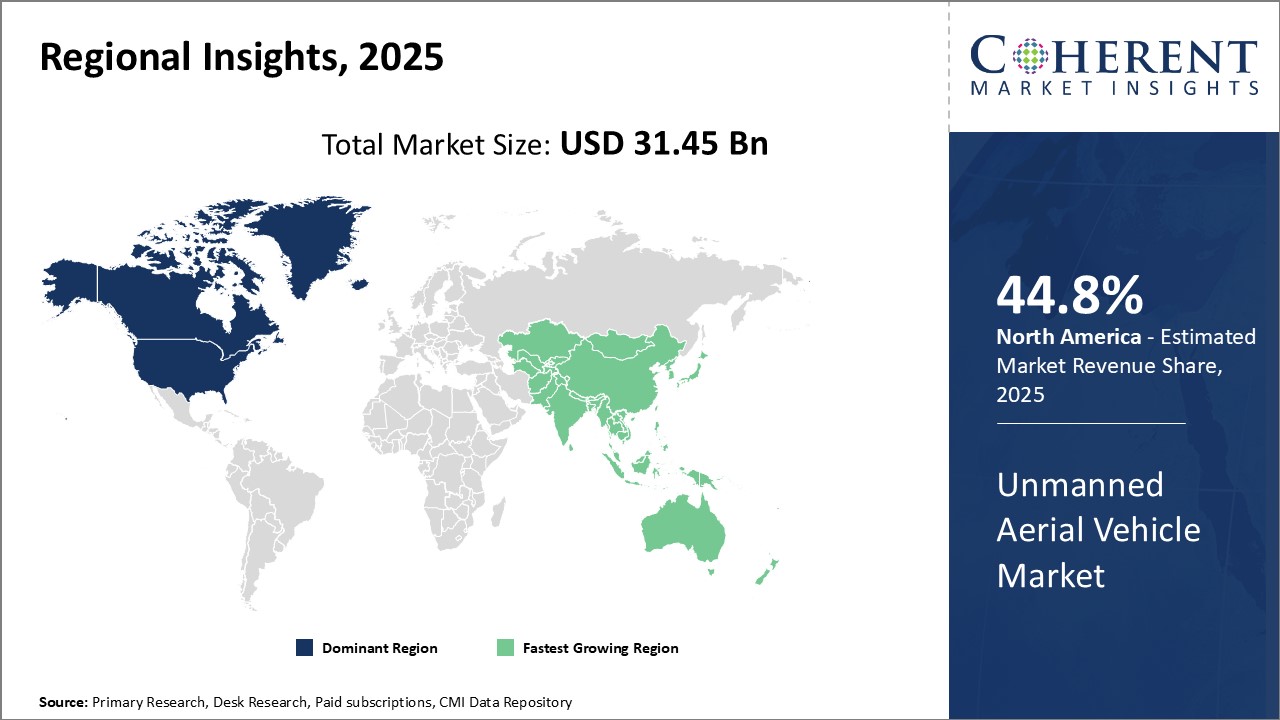
To learn more about this report, Request sample copy
North America has dominated the global unmanned aerial vehicle market. The region is expected to account for a market share of 44.8% in 2025. It has been the case for many years owing to strong defense budgets and early adoption of UAV technologies by the military and homeland security agencies in the U.S. and Canada. The U.S. accounts for the largest share of the market in the region due to heavy investments in R&D by defense organizations such as DARPA and IARPA as well as private technology companies working in collaboration with them. Several critical UAV projects aimed at intelligence, surveillance, and reconnaissance missions are based out of facilities in the U.S., making it a leader in military drone technologies.
The presence of top UAV manufacturers like General Atomics and Northrop Grumman have also ensured that North America remains the center for the design, development, and production of high-end military UAVs. This leadership in core technologies has enabled the region to export many types of armed and unarmed drones to allies. The per capita defense expenditure in the U.S. and Canada remains higher than most other nations, allowing sustained procurement of UAVs to replace aging fleets and upgrading of platforms to incorporate latest innovations.
The Asian market, especially China, has emerged as the fastest growing regional market for unmanned aerial vehicles with a CAGR of 14% for the forecast period (2025-2031). Significant growth in the country's defense budget has translated into massive contracts for domestic UAV developers to meet military requirements. Civilian use of drones is also witnessing a boom with e-commerce and surveillance applications driving demand. Many local manufacturers have come up who offer cost-competitive solutions compared to American and Israeli brands.
China's large drone industry is fueled by government incentives for development of core technologies as well as preference given to local companies in public procurements. This is enabling indigenous production to meet both military and non-military UAV needs with positive implications for import substitution. The availability of low-cost options is stimulating new applications while export opportunities are expanding in Asia Pacific and Africa. Going forward, China's market size is projected to approach that of North America due to rapid uptake across multiple sectors.
Joining thousands of companies around the world committed to making the Excellent Business Solutions.
View All Our Clients